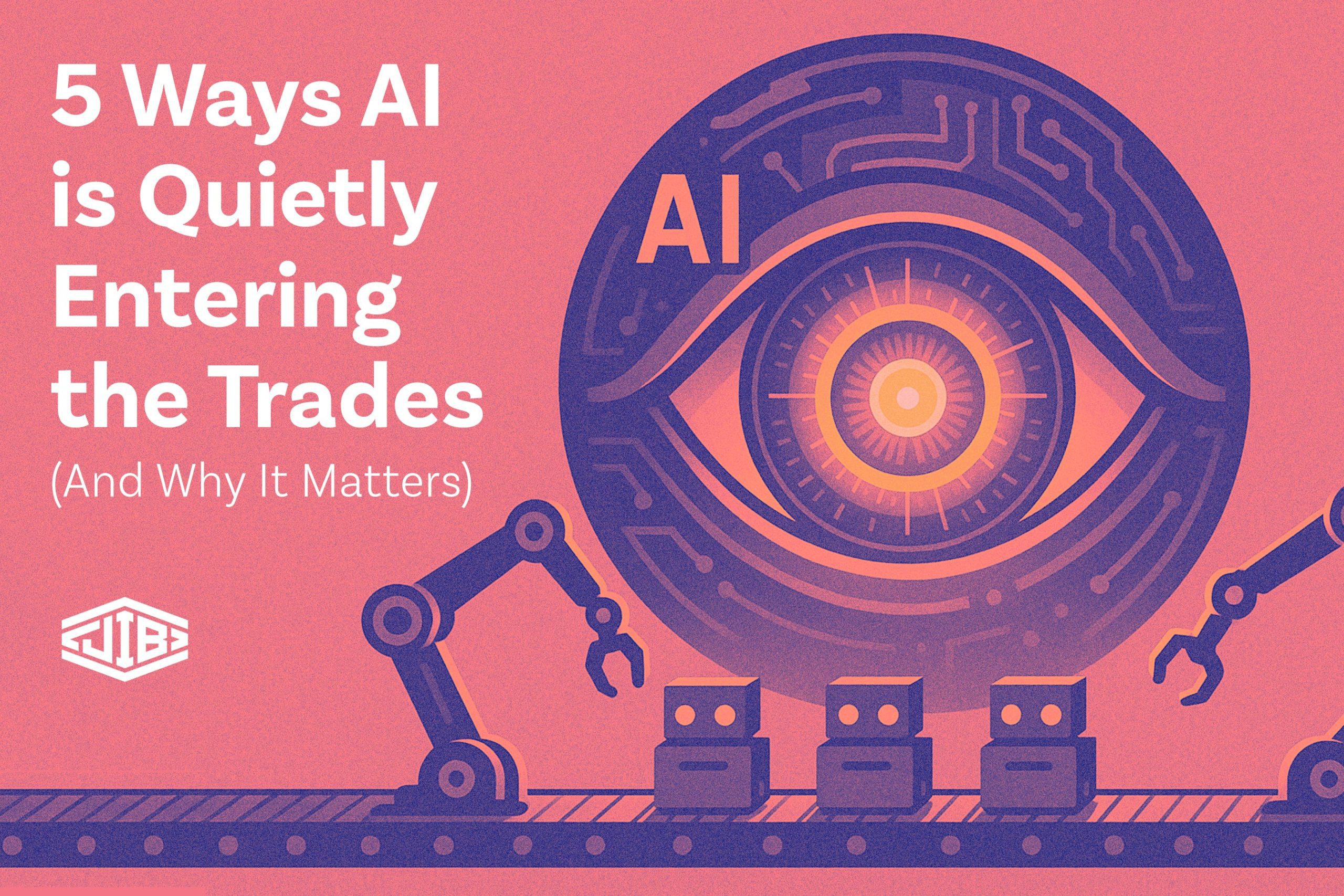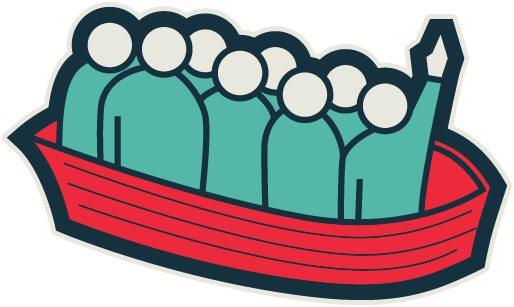If you’ve spent any time around construction sites lately, you’ve probably heard the buzz about artificial intelligence (AI). Depending on who you ask, it’s either the savior of productivity, or the end of skilled trades as we know them.
The truth, as usual, is somewhere in between.
AI isn’t here to replace skilled tradespeople. Not anytime soon. But it is quietly finding its way into tools, workflows, and processes across the industry. And for anyone working in the trades, or managing projects, it’s worth understanding where these changes are happening and why they matter.
Here are five ways AI is sneaking into the trades, often in ways that help, rather than threaten, the people doing the work.
1. Safety Cameras That Spot Trouble
Once, safety managers had to manually sift through hundreds of jobsite photos or wander around trying to spot hazards. Now, AI-powered software like Intenseye or Everguard.ai analyzes video feeds and photos to detect:
- Missing PPE (like hard hats or harnesses)
- Workers too close to edges
- Unsafe behaviors like running on site
Why it matters:
These systems help safety teams catch problems early, before someone gets hurt. Far from replacing safety personnel, AI gives them supercharged eyes and ears.
2. Layout Robots Guided by AI
Remember spending hours with a chalk line and measuring tape to lay out walls or mechanical runs? Companies like Dusty Robotics have introduced AI-driven layout robots that:
- Read digital drawings
- Roll around slabs, printing precise layout lines
Why it matters:
Layout is still a skilled task, but this tech saves time, reduces mistakes, and cuts rework. And it’s still operated by tradespeople, not by robots working alone.
3. Predictive Maintenance for Equipment
Trades like HVAC, electrical, and plumbing increasingly rely on sensors and AI algorithms that:
- Detect early signs of equipment failure
- Predict when systems need service
- Reduce surprise breakdowns
Systems from companies like Honeywell and Siemens analyze vibrations, temperature readings, and runtime data to predict issues before they become emergencies.
Why it matters:
Instead of endless reactive repairs, skilled tradespeople can plan their work and reduce costly downtime. It’s a shift toward smarter service rather than “firefighting.”
4. AI-Assisted Visual Inspections
AI software can now scan photos for quality issues, like:
- Cracks in concrete
- Gaps in insulation
- Missing structural elements
Tools like OpenSpace automatically document jobsite progress and highlight discrepancies.
Why it matters:
It’s not replacing inspectors, it’s a second set of eyes. Tradespeople can catch mistakes sooner, reducing costly rework and project delays.
5. Smarter Scheduling and Crew Management
AI-powered project management tools like Alice Technologies crunch huge amounts of data to:
- Predict schedule impacts from weather, supply chain delays, or manpower changes
- Suggest optimized crew assignments
- Model “what if” scenarios for delays
Why it matters:
For trades crews, this can mean more predictable workdays, fewer last-minute schedule changes, and smoother coordination between different trades on a jobsite.
So… Is AI Coming for Your Job?
Not likely. Skilled trades involve:
✅ Precision manual work (like welding, wiring, installing systems)
✅ Quick problem-solving in unpredictable conditions
✅ Coordination and teamwork
✅ Judgment calls robots just can’t make
Instead, AI is augmenting the trades, handling repetitive tasks, analyzing mountains of data, and spotting issues humans might miss. The tradespeople who thrive will be those willing to learn how to work alongside these new tools.
And that’s the real story: AI isn’t replacing the trades. It’s quietly reshaping how the trades do their best work, and opening new opportunities for safer, smarter, and more satisfying jobsites.
Want to learn more about how technology is transforming the construction world? Let’s talk.
Wondering how storytelling and smart marketing can advance offsite construction, mass timber, and sustainability in North America?
Whether you’re in AEC, sustainability, or shaping the built environment, we’d love to connect. Let’s talk – or explore BuildBetter.Marketing.
Structure needs story. Jib delivers.











